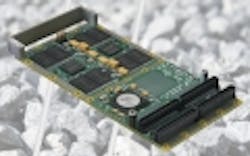Ft. Rucker replaces Evans and Sutherland image generators with MetaVR systems in Kiowa Warrior Simulators
Posted by John McHale
cockpit displays. The main development system has additional channels that further expand the out-the-window display on the left, forward, and right.In addition to delivering 26 VRSG channels, MetaVR developed and delivered high-resolution 3D databases of Fort Rucker and Fort Hunter Liggett. Each database is 100 by 100 km built from 1 meter imagery and 30 meter elevation posting.


